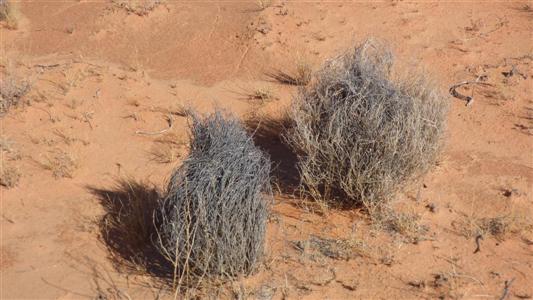
We are camped alongside the French Track having followed existing wheel marks.
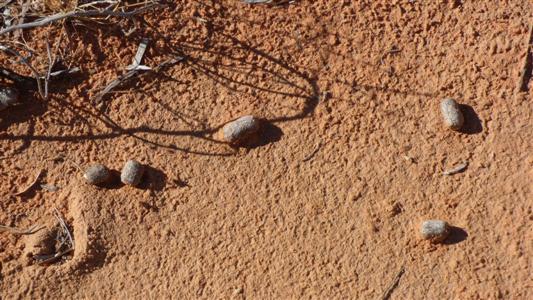
Within 10m of our truck are at least 10 old fire spots.
Our gps has a straight line track heading south west to the Knolls track.
But not on any of our other maps.
We haven't a clue what created this scat.
Most is spherical, this is more cylindrical.
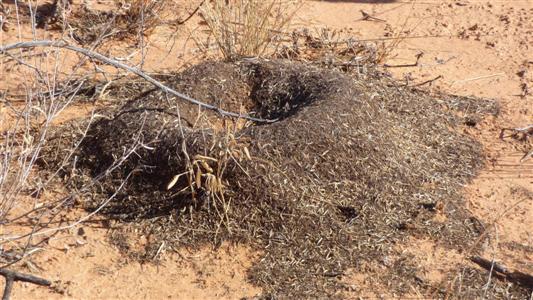
In the swale.
GPS says we are about 40m above sea level.
About 750km from the nearest sea (Port Augusta, at the top of Spencer Gulf). Almost due south.
The ants would know that, of course.
We looked out across the Spencer Gulf while camped on Yorke Peninsula.
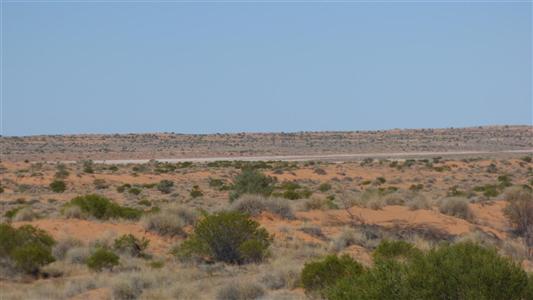
It sort of faded after about 1km.
We walked east, across a couple of dunes and swales.
Another km east we would have reached a dry lake which appears on our maps.
Instead we turned north along the dune top to the road, then back to camp.
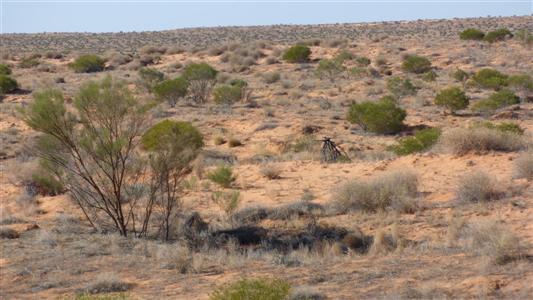
Like many interesting looking features it turned out to be another part of nature.
An indent full of dry scrub.
An upturned dead tree further away.
We'll rest our imaginations for a bit.
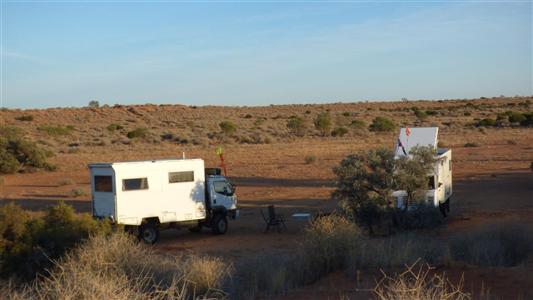
The flies drove us inside.
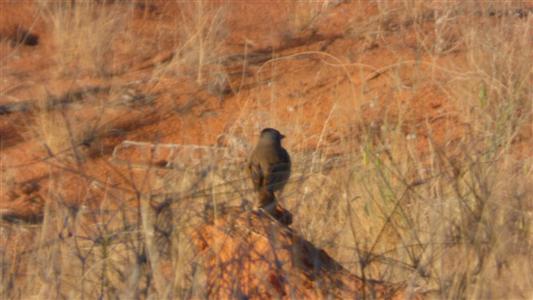
We still need a bird book!
This was not far away as the sun rose.
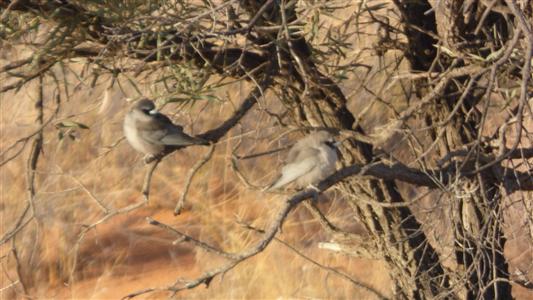
Black faced wood swallows.
They are like what we saw at the Knolls.
Somewhere between second breakfast and lunch we pooled our resources and thoughts to consider what life in the desert would have been like for Aboriginals.
We have some information about wells and trade routes.
Even a sketch map of Central Australia with Beelpa (Pilpa) - an Aboriginal Well - marked.
But not sufficient to find anything of significance.
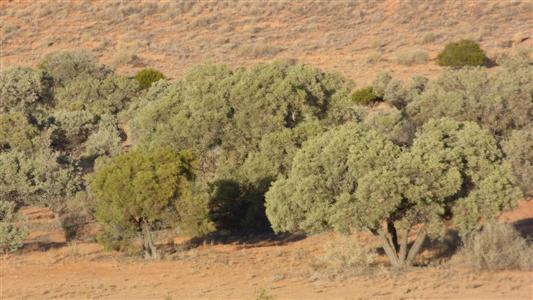
Different colours for different trees.
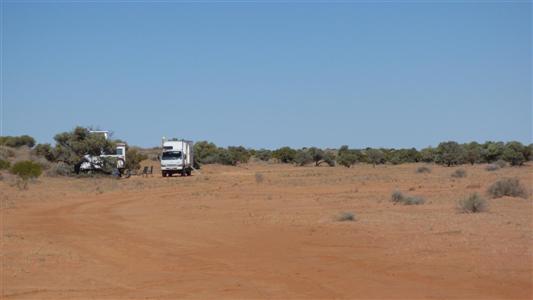
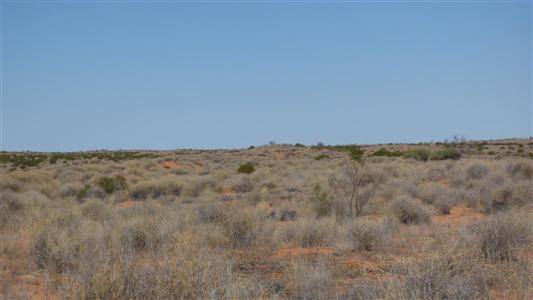
Also from the road looking south.
The absence of low bushes that were present at our dune top camp is obvious even to us.

Different trees and other vegetation.
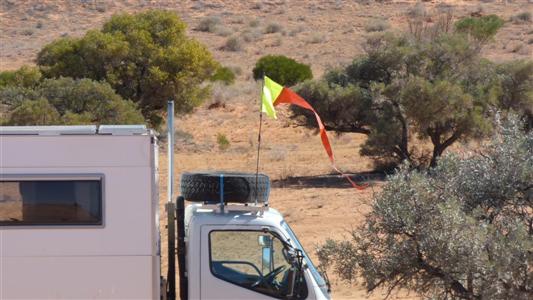
Minimum 300mm wide by 290mm high.
Made of red orange or lime yellow in colour.
If attached to bullbar the top of the flag must be more than 3.5m from the ground.
If attached to the roof rack the top of the flag must be more than 2m from the roof of the vehicle.
Which in our case would make the top about 4.3m above the ground.
I suspect allowance has not been made for forward control trucks.
Nor perhaps any allowance for the very flexible masts, bending backwards with the wind of passage, which seem to be popular.
We are certain that Priscilla meets the spirit of this exacting specification.
For future reference, orange is much more visible against the sky than yellow.

It looks like its been sharpened. A spear head. Its relatively easy to distinguish between arrow heads and spear heads - we believe Aboriginals didn't have bows.
Lindsay crossed the desert in 1886 following a series of nine Aboriginal wells. Later repeated by Bartell in 1980.
The position of Beelpa well is well (pun intended) known, but inaccessible, to our south and seems central to the trade routes. We were probably not far from Wolporican well when we stopped at the Knolls.
There are probably a whole heap of "soaks" and "wells" in the desert that are not generally known of. We can't think of a reason why there would be only nine.
The clay and gypsum, which was used for cement by Europeans, formed the knolls, and forms a bit of a crust on dune tops after a bit of rain, was possibly used to stabilise and line the soaks and wells.
In the early days of European exploration and occupation of the land, when a single camel could drink in a single sitting more than a single human in a whole year, the scarce resources provided by the wells were, of necessity, protected.
In some places the secrecy led to deaths.

Our imaginations have us waiting for a giraffe to wander among the acacias.
Thinking further, with great difficulty, what life in the desert would have been like, I imagine the effect of scarce resources on culture.
In the Hani Rice Fields in China there seemed to be just the right amount of water and a high level of cooperation. In Nepal there seemed too much water and less need for cooperation, Here there is little water which may have contributed to a culture which preserves and protects.
I live in a culture which seems to see resources as something to be exploited as individuals compete to create an unsustainable whole. Some days it doesn't make sense.
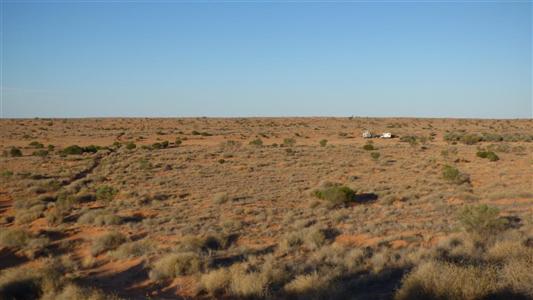
Our second night here.
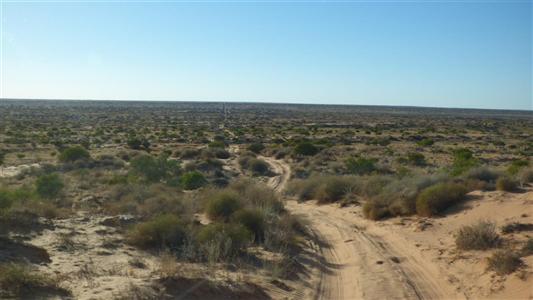
Wider, steeper, dunes.
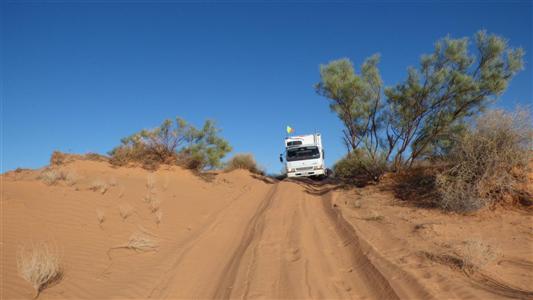
Stopped to let a bit more air out of tyres.
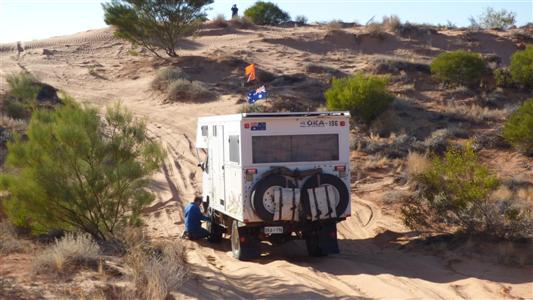
A rear axle shaft broken. Heard the bang. A simple diagnosis - jacked up one wheel and it spun freely.
Peter is letting some air out of tyres to see if just front wheel drive is sufficient. But no, the dune is too steep and soft.
Easy to open up the wheel end, and remove the outboard bit of the shaft.
A pair of kitchen tongues to pull the rest out.
A short fatigue crack.... then "bang".
Removed rear drive shaft to leave front wheel drive.
Rather than assist with tow, putting extra stress on both vehicles, we used the satphone to organise a new part shipped to Birdsville.
Incredible support. 45 minutes from first call to knowing the part is in the post.
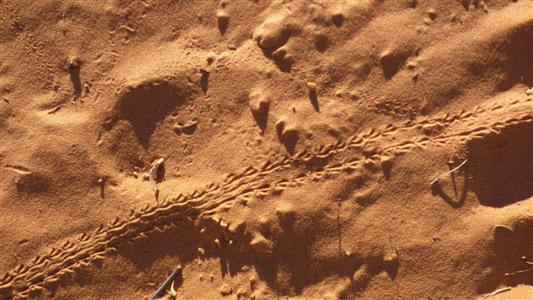
Wait for the postman!
We have ample supplies.
Watch the traffic pass.
And see if we can find what makes the tracks.
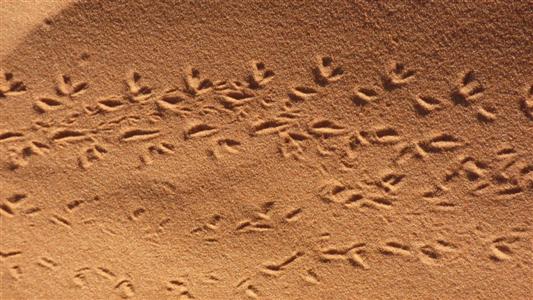
Looks promising.
We are almost at the top of the dune.
About 30m from the Oka. We'll get fit, walking up and down the hill.
A bit more windy than we have seen previously.
Enough to blow sand from around the tyres.
So every so often the truck goes "bump".
A lot more windy. Morning temperature a bit cool.